Sparking Culture Change For a Safer Tomorrow
2022 Annual Report
Sparking Culture Change
for a Safer Tomorrow
2022 Annual Report
Dear SafeSport Community,
At the U.S. Center for SafeSport, we take seriously our unique role in ending abuse in sport. During our sixth year of operation, we exceeded our benchmarks for case resolution, courses delivered, audits of national governing bodies, and building important new partnerships. We continue to evolve to meet the growing needs of athletes and the demand for accountability in sport, and we work hard every day to spark the culture change it takes to build champions for abuse prevention in every corner.
Reports of abuse and misconduct made to the Center increased by more than 50% over the past year, and we take that as a signal of a shift in culture that has been so desperately needed across the sport landscape. More and more people are recognizing the problem of abuse in sport, and many athletes and bystanders are coming forward because they know the Center is a trusted resource to them.
The Center’s concerted efforts to change sport culture for the better are grounded in the core functions of our work:
- • Setting clear ground rules through the SafeSport Code and the Minor Athlete Prevention Abuse Prevention Policies (MAAPP)
- • Holding both individuals and organizations accountable to those rules and policies through Response and Resolution and Audit and Compliance processes
- • Educating the sport community to prevent abuse and misconduct before it occurs and respond appropriately to allegations that arise
While we are making progress, we acknowledge the road to meeting our mandate is long. There remains a trust gap that can only be met through increased accountability, commitment, and investment into addressing abuse and misconduct. Individuals impacted by abuse must have confidence that there are avenues for recourse and that a toxic sport culture will not be tolerated.
Culture change is a team sport. It will take everyone working together to reach our goals, because returning to the way things were before the Center is simply not an option.
We are forging ahead to a future where inclusive and safe sport environments are commonplace, where athletes, coaches, and parents understand how to identify and recognize grooming and abuse, and the entire athletic community is fully engaged and prepared to guard the safety of athletes above all else.
The work in front of us is immense, but we are moving forward every day, every year, toward our goal of ensuring athletes are safe, supported, and strengthened. We invite you to learn more about our efforts over the past year in this report.
Sincerely,
Ju’Riese Colón
CEO, U.S. Center for SafeSport
Jessica Herrera-Flanigan
Immediate Past Board Chair, U.S. Center for SafeSport
(Board Chair term: January 2021 – June 2023)
April Holmes
Board Chair, U.S. Center for SafeSport
(Board Chair term: June 2023 – present)
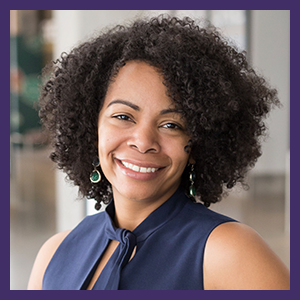
Ju’Riese Colón
Chief Executive Officer
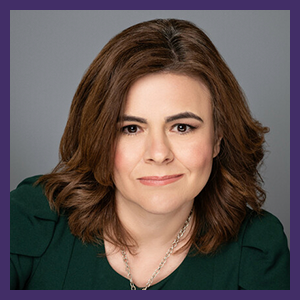
Jessica Herrera-Flanigan
Immediate Past Board Chair
(Jan. 2021 - June 2023)
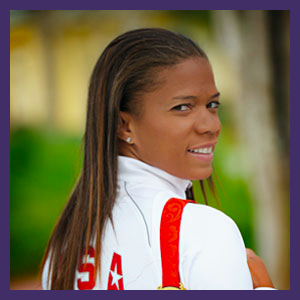
April Holmes
Board Chair
(June 2023 - Present)
The Center thanks Jessica Herrera-Flanigan for her dedication to advancing athlete safety over her years of service to the Board of Directors and welcomes April Holmes as the first athlete and Paralympian to serve as the Center’s Board Chair.
Our Story
As reports of sexual abuse in amateur sport made headlines in the 2010s, it became clear that America needed an independent organization focused on preventing abuse and misconduct in sport, and on providing a fair and effective system for responding to and investigating allegations of such conduct across the U.S. Olympic and Paralympic Movement (the Movement). The U.S. Center for SafeSport opened in March 2017 to fill this need.
Less than a year later, Congress passed the Protecting Young Victims from Sexual Abuse and Safe Sport Authorization Act of 2017, which codified the Center’s authority to resolve abuse reports involving individuals in the Movement—encompassing millions of athletes and others at national, regional, and local levels.
The Act also charged the Center with developing policies and procedures to prevent sexual, emotional, and physical misconduct—so that the U.S. Olympic & Paralympic Committee (USOPC), 50+ other national governing bodies (NGBs), and their local affiliated organizations would adhere to clear and consistent standards for abuse prevention and training.
In late 2020, another game-changing federal law was passed, the Empowering Olympic, Paralympic, and Amateur Athletes Act of 2020, that strengthened athlete safeguards and Center oversight functions. The Act also mandated a reliable annual funding stream from the U.S. Olympic and Paralympic Committee to bolster the Center’s long-term sustainability.
2022 Center Milestones
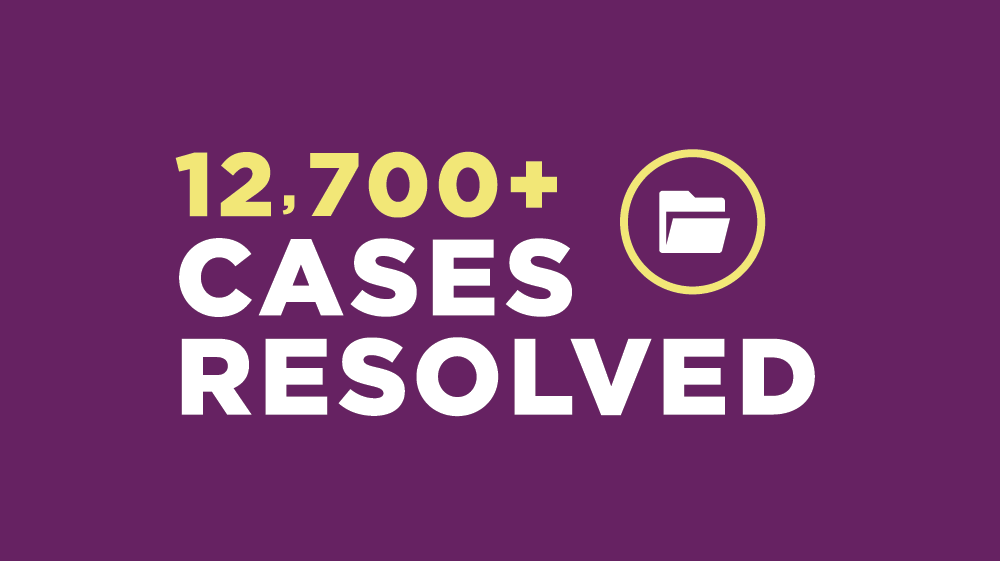
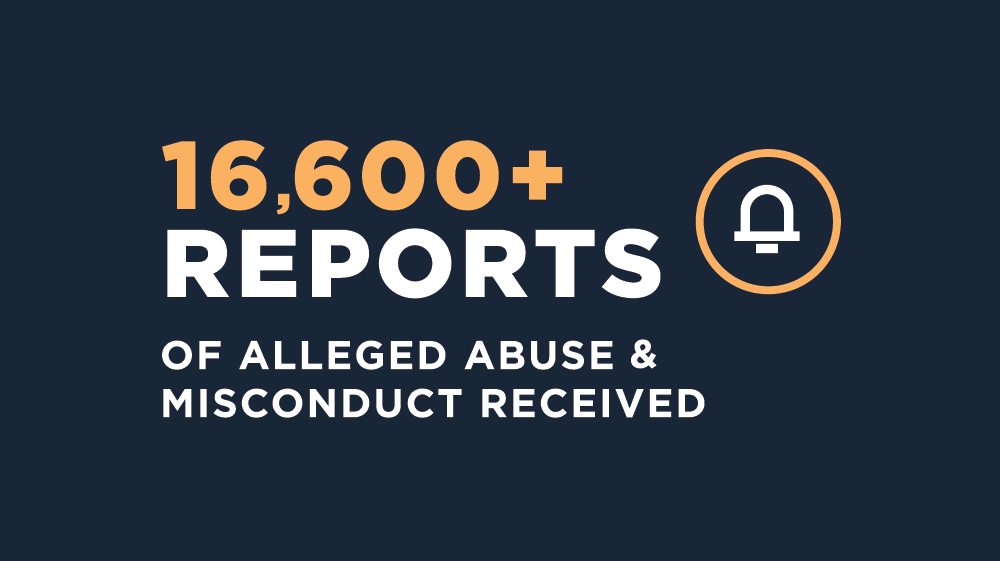
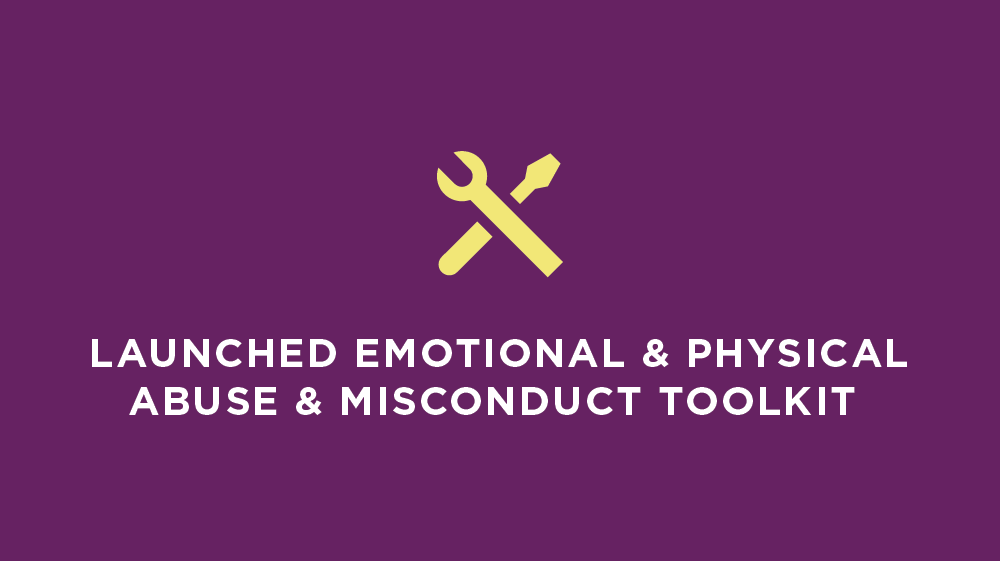
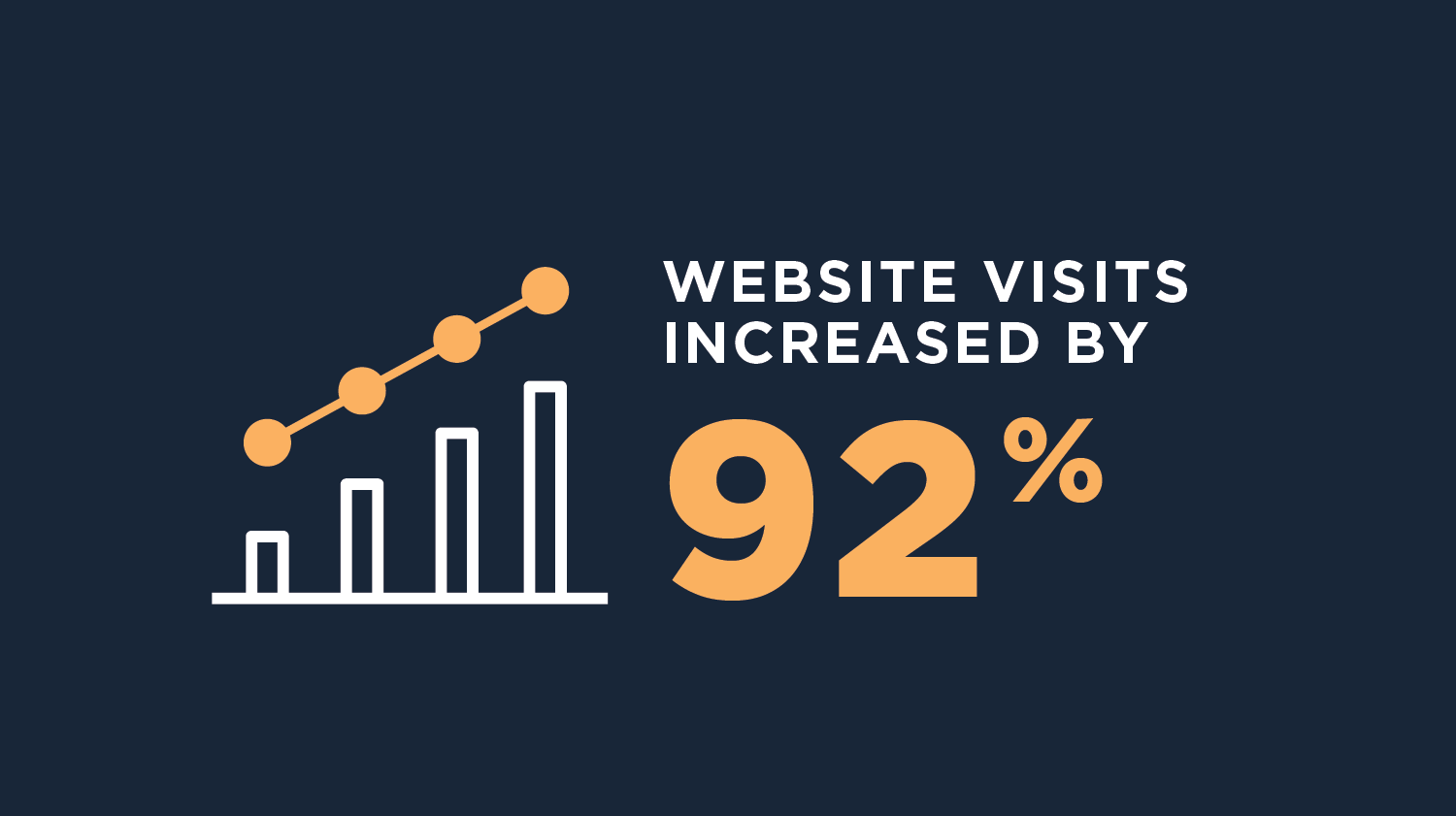
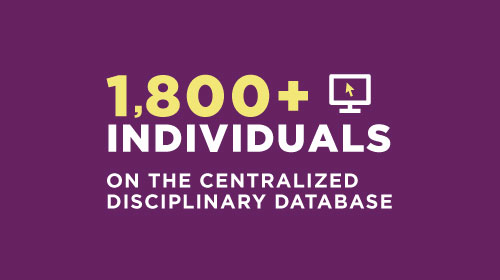
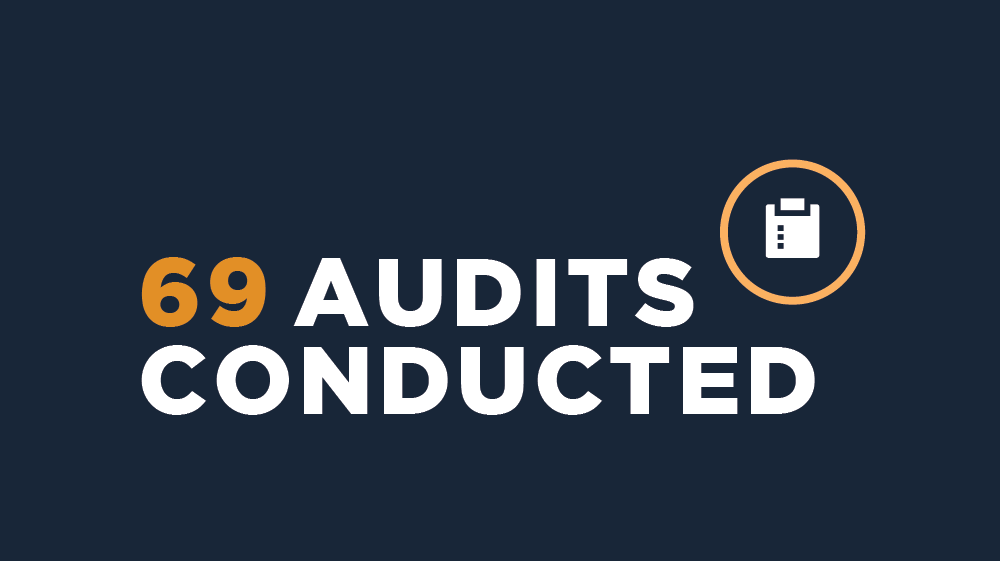
2022 Center Data
Data is critical to advancing the Center’s mission. The Center is working to improve its data collection and analysis to increase case efficiencies and inform education efforts.
Governance and Vision
Independent, Transparent, and Visionary Leadership
The U.S. Center for SafeSport is overseen by a volunteer Board of Directors, which includes several elite athletes as well as sport-engaged professionals in capacities that include ethics, compliance, equity, health, and safety.
The extensive experience of Center board members is the basis of a strong foundation of leadership. Their commitment of time and ideas—attending quarterly board meetings and participation on Audit, Finance, and Nominating & Governance committees that draw on subject-specific expertise—keeps the Center focused on its mission.
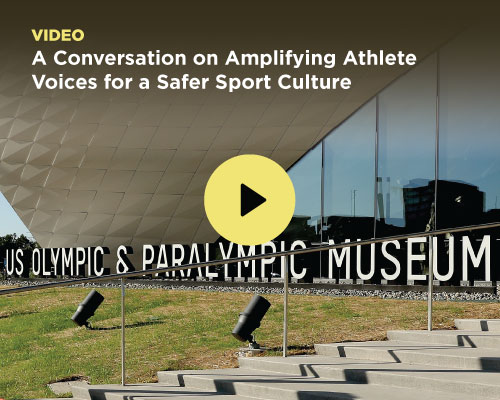

Governance and Vision
Independent, Transparent, and Visionary Leadership
The U.S. Center for SafeSport is overseen by a volunteer Board of Directors, which includes several elite athletes as well as sport-engaged professionals in capacities that include ethics, compliance, equity, health, and safety.
The extensive experience of Center board members is the basis of a strong foundation of leadership. Their commitment of time and ideas—attending quarterly board meetings and participation on Audit, Finance, and Nominating & Governance committees that draw on subject-specific expertise—keeps the Center focused on its mission.
Federal law and Center bylaws require board members to serve the Center’s athlete safety priorities without conflict, and the U.S. Government’s General Accountability Office annually certifies the Center’s independence from material conflicts of interest.
Integrity and transparency of governance are paramount to the Center, which reports annually to Congress on its activities. As the Center lays groundwork for a new Strategic Plan for 2024 and beyond, it will continue to foster public trust as a reliable steward of athlete safety within and outside of the Movement. In 2020, the Center launched an ambitious vision through a three-year strategic plan that commits to a high standard of accountability.
STRATEGIC PLAN
The 2021-23 Strategic Plan has five core goals:
Accountability: Ensuring consistent execution of investigations, audits, and prevention programs, and driving culture change throughout the Movement
Accountability
Reach: Building trust with athletes, other stakeholders, and sport communities
Reach
Partnerships: Securing research opportunities, sharing best practices and resources, and generating awareness
Partnerships
Financial Sustainability: Developing diverse funding streams to supplement federally required funding from the Movement
Financial Sustainability
People Development: Build and develop the staff and board members
People Development
Tracking Toward Strategic Plan Goals
Audits
Auditing 100% of National Governing Bodies
Resources
Building a robust catalogue of emotional and physical misconduct resources
Financial
Working toward 6 months of financial reserves
Cases
Increasing case resolution by 25%
Trainings
Delivering 5 million SafeSport trainings & increasing trainings delivered by at least 10% annually
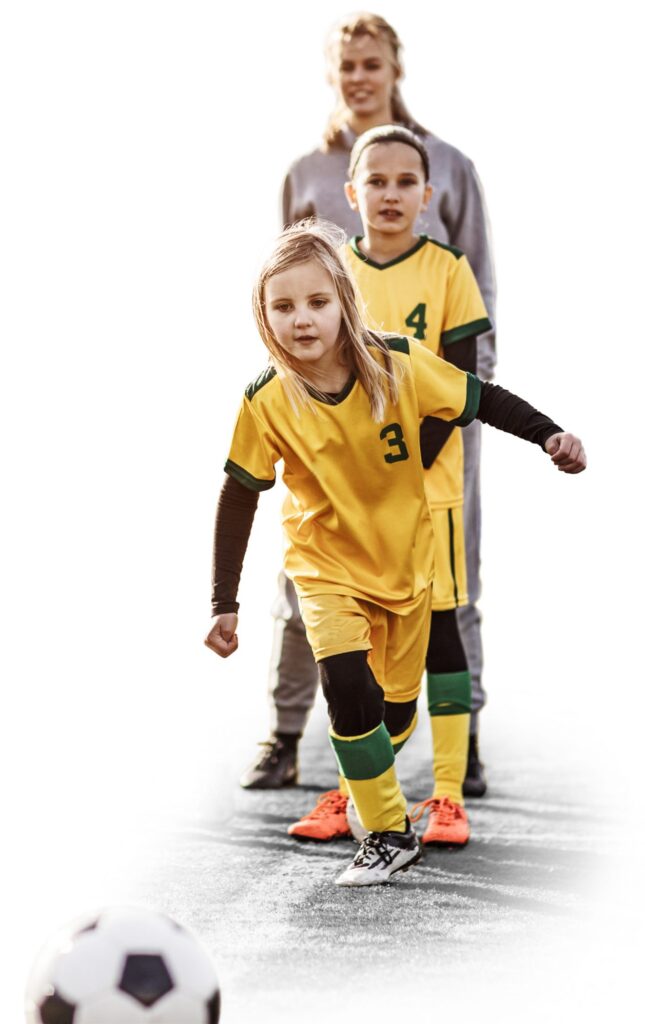
Accountability
Organizational
Ensuring Sport Leaders Play by the Rules
Athlete safety is enhanced when:
- • Sport organizations adhere to consistent, common-sense safety policies
- • Their compliance with these policies is stringently monitored
- • Sport leaders support and implement these policies at every layer of the organization
- • Their noncompliance leads to meaningful consequences
In 2022, the Center made notable progress toward bringing these goals to fruition across the Movement.
A primary mechanism for this progress was Center-conducted audits of the USOPC and every NGB to assess their compliance with athlete safety standards outlined in the Minor Athlete Abuse Prevention Policies (MAAPP) and the SafeSport Code. These regular and random audits of NGBs, conducted annually, are guided by processes outlined in the Audit and Compliance Manual released in January 2022.
Audit standards assessed include, among other things, verifying that all individuals who are required to take SafeSport Training have done so, that inappropriate one-on-one contact is not allowed in and around sport and related settings, and that relevant MAAPP standards are communicated by each NGB to everyone who must receive them.
In advance of the 2021-22 Event Audit Cycle, the Center offered NGBs informal site visits to help them proactively identify potential deficiencies and solutions. More than 90% of NGBs took advantage of these optional site visits.
In 2022, the Center conducted a record 69 audits of NGBs, including the USOPC, 52 focusing on administration and 17 surveying operations at events. These uncovered a total of 120 corrective actions, which NGBs then were required to remedy on a specified timeline.
By the end of the year, 77% of NGBs remediated all required corrective actions, with the remainder completing their corrective actions by the early part of 2023. Audit Reports of all NGBs and the USOPC are available online to provide a transparent public measure of their efforts to safeguard athletes, and to make it easy for parents, athletes, and other stakeholders to find important safety information.
Data from 2022 audits suggest that Center oversight improved the Movement’s progress toward implementing safety protocols. On a per-audit basis, corrective actions required of NGBs declined 15% from 2021 (2.03 per audit) to 2022 (1.73 per audit). In 2022, 15 audits did not result in any required corrective actions, up from 11 in 2021. And the percentage of NGBs needing over 60 days to remediate corrective actions fell from 46% (in 2021) to 13% (in 2022).
After seeking input from NGBs and other stakeholders, the Center set new Response and Resolution Audit Standards to support NGBs and hold them accountable in their handling of emotional and physical misconduct cases. While the Center may, and increasingly does, exercise jurisdiction over certain emotional and physical misconduct cases it is better positioned to resolve, these new standards require NGBs to have in place consistent and effective policies for investigating and resolving cases of emotional and physical misconduct in 2023 and beyond.
While strides toward athlete safety were made across the Movement, work remains to be done to eliminate compliance gaps and improve quality control, especially at events. Consistent and active communication between the Center and NGB stakeholders will be central to achieving this goal.

A primary mechanism for this progress was Center-conducted audits of the USOPC and every NGB to assess their compliance with athlete safety standards outlined in the Minor Athlete Abuse Prevention Policies (MAAPP) and the SafeSport Code. These regular and random audits of NGBs, conducted annually, are guided by processes outlined in the Audit and Compliance Manual released in January 2022.
Audit standards assessed include, among other things, verifying that all individuals who are required to take SafeSport Training have done so, that inappropriate one-on-one contact is not allowed in and around sport and related settings, and that relevant MAAPP standards are communicated by each NGB to everyone who must receive them.
In advance of the 2021-22 Event Audit Cycle, the Center offered NGBs informal site visits to help them proactively identify potential deficiencies and solutions. More than 90% of NGBs took advantage of these optional site visits.
In 2022, the Center conducted a record 69 audits of NGBs, including the USOPC, 52 focusing on administration and 17 surveying operations at events. These uncovered a total of 120 corrective actions, which NGBs then were required to remedy on a specified timeline.
By the end of the year, 77% of NGBs remediated all required corrective actions, with the remainder completing their corrective actions by the early part of 2023. Audit Reports of all NGBs and the USOPC are available online to provide a transparent public measure of their efforts to safeguard athletes, and to make it easy for parents, athletes, and other stakeholders to find important safety information.
Data from 2022 audits suggest that Center oversight improved the Movement’s progress toward implementing safety protocols. On a per-audit basis, corrective actions required of NGBs declined 15% from 2021 (2.03 per audit) to 2022 (1.73 per audit). In 2022, 15 audits did not result in any required corrective actions, up from 11 in 2021. And the percentage of NGBs needing over 60 days to remediate corrective actions fell from 46% (in 2021) to 13% (in 2022).
After seeking input from NGBs and other stakeholders, the Center set new Response and Resolution Audit Standards to support NGBs and hold them accountable in their handling of emotional and physical misconduct cases. While the Center may, and increasingly does, exercise jurisdiction over certain emotional and physical misconduct cases it is better positioned to resolve, these new standards require NGBs to have in place consistent and effective policies for investigating and resolving cases of emotional and physical misconduct in 2023 and beyond.
While strides toward athlete safety were made across the Movement, work remains to be done to eliminate compliance gaps and improve quality control, especially at events. Consistent and active communication between the Center and NGB stakeholders will be central to achieving this goal.
Audits Conducted in 2022
Administrative
Event
Total
Individual
Resolving Reports Fairly and Holding Individuals Accountable
To fulfill its federal mandate to safeguard athletes in amateur sport from abuse and misconduct, the Center works to prevent inappropriate activity by:
- • Accepting and facilitating reports through a confidential online portal
- • Investigating and adjudicating alleged violations of the SafeSport Code
Determining and issuing sanctions, including public sanctions, based on findings of abuse or misconduct, as well as process violations such as retaliation and failure to report.
Significant growth in intake, investigations, and administrative staff has helped the Center manage escalating report volumes, resolve more cases, sanction more Code violators, and increase guidance for those involved in a Center process.
Anyone can make a report of abuse or misconduct involving individuals at any level—local, regional, or national—in 50+ Olympic and Paralympic sports. And in 2022, the Center received a record 5,687 reports—53% more than in 2021, the prior record year, and nearly 2,000% more than the Center’s opening year of 2017. Increased reports are a reflection of greater public awareness, trust in protecting the confidentiality of witnesses and potential claimants, and increased confidence in the Center’s processes.
These reports are then addressed by a Center Response and Resolution staff of 60+ individuals—including intake staff who determine appropriate steps for each report, and investigators who average 15 years of prior experience in roles from federal and municipal law enforcement to sex crimes, child abuse, and Title IX specializations. The Center also employs Resource & Process Advisors to assist participants in the process and answer questions from a neutral perspective.
In 2022, 520 cases proceeded to informal and formal resolutions, reflecting the Center’s commitment to timely resolutions and fair and full investigations of evidence. While thorough investigations can be time-intensive and laborious, procedural refinements and efficiencies enabled cases to be resolved in less time, on average, than in prior years. And for the second consecutive year, the Center resolved more cases than it opened—surpassing the 12,000-case milestone for lifetime case resolutions—reflecting a substantial reduction, despite the sharp increase in reports, in case backlog that the Center experienced in earlier years.
In 2022, 482 individuals were sanctioned based on a SafeSport Code violation, which in some cases led to a listing on the Centralized Disciplinary Database (CDD)—published on the Center’s website since 2017 and now listing more than 1,800 adult individuals restricted from sport participation.
The Center continues to explore new ways to increase efficiencies and better leverage its unique dataset to advance its mission. To this end, the Center has begun the process of developing its own customized internal case management system to improve not only case efficiencies, but also the collection of data to analyze trends and inform education and training. With case volume expected to continue rising into 2023, the Center will redouble its efforts to improve process efficiency and collaboration with others who have a stake in athlete safety.
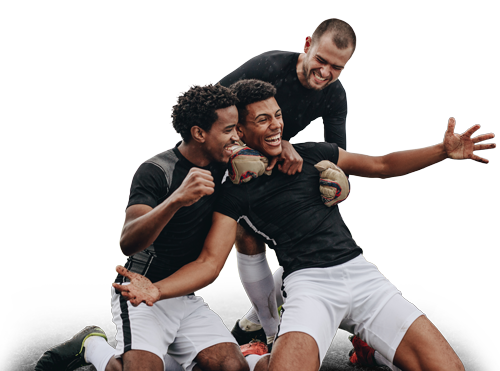
Significant growth in intake, investigations, and administrative staff has helped the Center manage escalating report volumes, resolve more cases, sanction more Code violators, and increase guidance for those involved in a Center process.
Anyone can make a report of abuse or misconduct involving individuals at any level—local, regional, or national—in 50+ Olympic and Paralympic sports. And in 2022, the Center received a record 5,687 reports—53% more than in 2021, the prior record year, and nearly 2,000% more than the Center’s opening year of 2017. Increased reports are a reflection of greater public awareness, trust in protecting the confidentiality of witnesses and potential claimants, and increased confidence in the Center’s processes.
These reports are then addressed by a Center Response and Resolution staff of 60+ individuals—including intake staff who determine appropriate steps for each report, and investigators who average 15 years of prior experience in roles from federal and municipal law enforcement to sex crimes, child abuse, and Title IX specializations. The Center also employs Resource & Process Advisors to assist participants in the process and answer questions from a neutral perspective.
In 2022, 520 cases proceeded to informal and formal resolutions, reflecting the Center’s commitment to timely resolutions and fair and full investigations of evidence. While thorough investigations can be time-intensive and laborious, procedural refinements and efficiencies enabled cases to be resolved in less time, on average, than in prior years. And for the second consecutive year, the Center resolved more cases than it opened—surpassing the 12,000-case milestone for lifetime case resolutions—reflecting a substantial reduction, despite the sharp increase in reports, in case backlog that the Center experienced in earlier years.
In 2022, 482 individuals were sanctioned based on a SafeSport Code violation, which in some cases led to a listing on the Centralized Disciplinary Database (CDD)—published on the Center’s website since 2017 and now listing more than 1,800 adult individuals restricted from sport participation.
The Center continues to explore new ways to increase efficiencies and better leverage its unique dataset to advance its mission. To this end, the Center has begun the process of developing its own customized internal case management system to improve not only case efficiencies, but also the collection of data to analyze trends and inform education and training. With case volume expected to continue rising into 2023, the Center will redouble its efforts to improve process efficiency and collaboration with others who have a stake in athlete safety.
Prevention education
Educating to Raise Awareness and Prevent Abuse
Policies and penalties can help reinforce accountability in the here and now. But to support safe sport settings over the long haul, the Center aims to cultivate knowledge and awareness with as many sport and youth safety stakeholders as possible. This will build a critical mass of people who can effectively recognize, prevent, and respond to the varied ways abuse and misconduct can appear in sport.
A central way the Center does this is by developing abuse prevention courses—which are available at SafeSport Courses for All and through some NGBs’ dedicated training portals.
This year, the Center delivered over 1.5 million courses, exceeding the prior annual high by 56%.
Completions more than doubled for the Center’s foundational SafeSport Trained Core course. Still, a majority of SafeSport courses taken in 2022 were non-Core courses. These include three SafeSport refreshers and courses tailored to volunteers, health professionals, athletes with disabilities, parents, and others. Stakeholders across sport and youth recreation communities are demonstrating that they value learnings that directly relate to their role and circumstances, regardless of their affiliation with the Movement.
Another substantive way the Center enhances abuse and misconduct awareness is by producing abuse prevention resources in various media and formats ranging from podcasts, to digital animations, to downloadable resources.
In 2022, the Center released a comprehensive Emotional & Physical Abuse and Misconduct Toolkit. Across a user-friendly microsite, this toolkit summarizes categories of abuse and misconduct, introduces proactive ways to safeguard athletes, and advises on how to respond to inappropriate behavior. It aligns with the Center’s increasing focus on these diverse categories of abuse and misconduct, including bullying and hazing. And it reflects a broader societal recognition that some behaviors traditionally ingrained in sport cultures are, in fact, harmful and unacceptable.
The Center is also increasing personnel to develop customized live trainings, virtually or in person for groups on request. By strengthening training and education capacities—while also increasing training for law enforcement professionals such as attorneys general—the Center is improving its ability to provide abuse prevention principles and best practices whenever and wherever they’re needed.
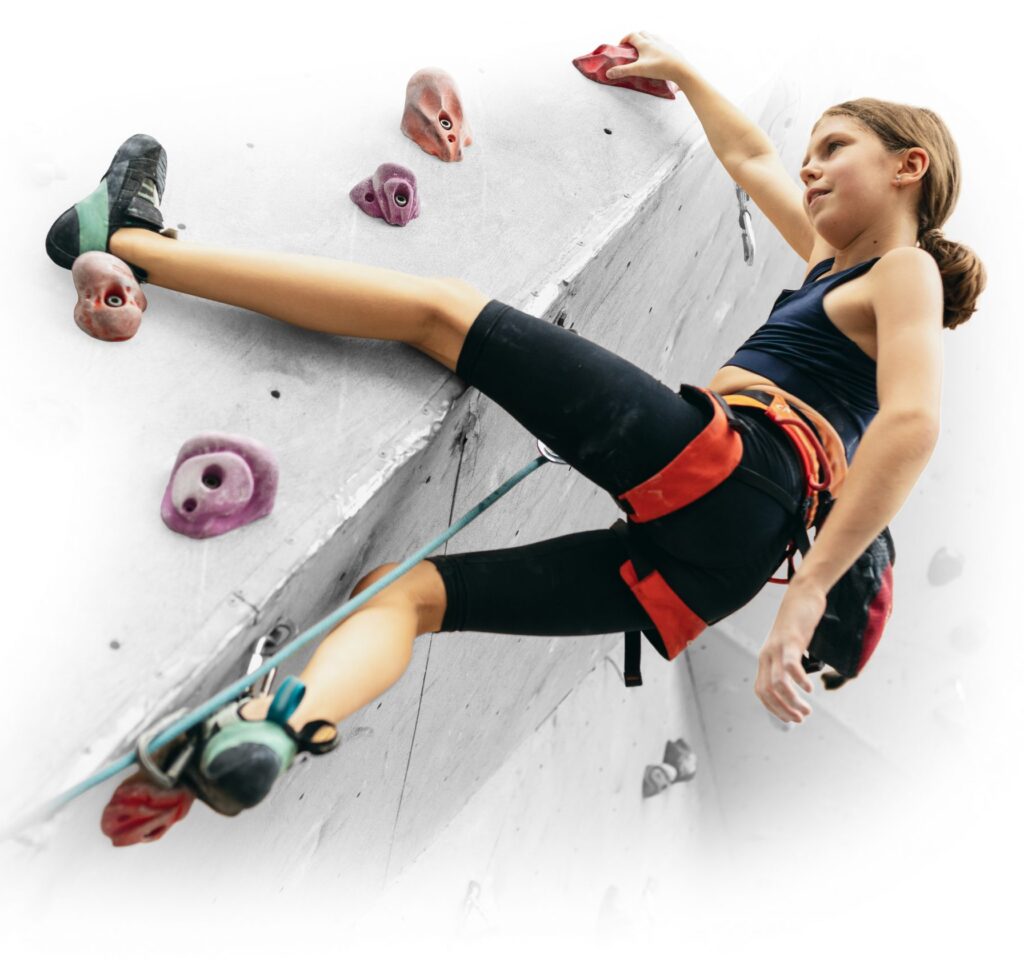
Completions more than doubled for the Center’s foundational SafeSport Trained Core course. Still, a majority of SafeSport courses taken in 2022 were non-Core courses. These include three SafeSport refreshers and courses tailored to volunteers, health professionals, athletes with disabilities, parents, and others. Stakeholders across sport and youth recreation communities are demonstrating that they value learnings that directly relate to their role and circumstances, regardless of their affiliation with the Movement.
Another substantive way the Center enhances abuse and misconduct awareness is by producing abuse prevention resources in various media and formats ranging from podcasts, to digital animations, to downloadable resources.
In 2022, the Center released a comprehensive Emotional & Physical Abuse and Misconduct Toolkit. Across a user-friendly microsite, this toolkit summarizes categories of abuse and misconduct, introduces proactive ways to safeguard athletes, and advises on how to respond to inappropriate behavior. It aligns with the Center’s increasing focus on these diverse categories of abuse and misconduct, including bullying and hazing. And it reflects a broader societal recognition that some behaviors traditionally ingrained in sport cultures are, in fact, harmful and unacceptable.
The Center is also increasing personnel to develop customized live trainings, virtually or in person for groups on request. By strengthening training and education capacities—while also increasing training for law enforcement professionals such as attorneys general—the Center is improving its ability to provide abuse prevention principles and best practices whenever and wherever they’re needed.
"Children who participate in sports can gain valuable physical, social and emotional benefits... The U.S. Center for SafeSport’s toolkit offers valuable tactics to help the public prevent, recognize and respond to emotional and physical abuse and misconduct."
— Tom Farrey
Executive Director
Aspen Institute Sports & Society Program
Collaboration and Connections
To fully embed athlete safety within the landscape of American sport and recreation, we need to build partnerships and use diverse methods for reaching athletes and allies beyond the Movement, especially in informal active settings such as neighborhood recreation centers. As we reach more stakeholders, we must then listen to them—because safer sport is not simply about what we say, it’s about what people hear, and the healthy dialogues the Center’s outreach provokes.
Community organizations of all sizes outside the Movement increasingly provide their athletes, coaches, staff, and volunteers with online Center trainings available at SafeSportTrained.org. The Center provides a wide variety of course offerings, convenient course delivery, and informed customer support so organizations may adapt training that’s just right for their compliance and risk management programs.
Courses taken by individuals outside of the Olympic and Paralympic Movement increased by one-third in 2022. The Arctic Games 2024, First Tee, League One Volleyball, Major League Baseball, Drum Corps International and National Roller Sports Association are just a few of the 1,200+ organizations outside the Movement who have worked directly with the Center to make their sport and recreation settings safer.
Those who opt-in to SafeSport training are choosing to equip their coaches and staff with critical abuse awareness and prevention resources. In turn, their commitment to purchase the Center’s courses leads to a growing, sustainable revenue stream that supports future educational development.
Visit SafeSport Courses for All to learn more about how the Center’s audience-tailored courses can help your organization.
The Center in 2022 expanded the scope of its volunteer SafeSport Athlete Advisory Team (SAAT) to include new athlete perspectives, and amplify their voices across Center activities. SAAT’s 14 athlete members represent a dozen sports—including several Olympians and Paralympians as well as numerous athletes at grassroots and regional levels—a 50-year age span, and perspectives that range from international commissions, academic research, and leadership and advocacy within their sport. SAAT members are united in their commitment to advancing athlete safety.
During 2022, the Center developed and grew relationships with important partners. With the support of LA 28, the Center has joined with Los Angeles Recreation and Parks to build a framework of policies, protocols, and trainings to make City recreational facilities safer for youth in advance of the Los Angeles 2028 Olympic and Paralympic Games.
The Center reached more stakeholders in 2022 through methods including a digital media campaign that generated over 35 million impressions, a website that attracted 92% more page visits than in 2021, new Facebook and LinkedIn presences, a new e-newsletter (The Gameplan), and award-winning public service announcements that garnered over 143 million impressions. And a sponsorship with NBC Sports Next’s SportsEngine delivers easy-to-implement SafeSport tips to millions of readers monthly.
The Center in 2022 expanded the scope of its volunteer SafeSport Athlete Advisory Team (SAAT) to include new athlete perspectives, and amplify their voices across Center activities. SAAT’s 14 athlete members represent a dozen sports—including several Olympians and Paralympians as well as numerous athletes at grassroots and regional levels—a 50-year age span, and perspectives that range from international commissions, academic research, and leadership and advocacy within their sport. SAAT members are united in their commitment to advancing athlete safety.
During 2022, the Center developed and grew relationships with important partners. With the support of LA 28, the Center has joined with Los Angeles Recreation and Parks to build a framework of policies, protocols, and trainings to make City recreational facilities safer for youth in advance of the Los Angeles 2028 Olympic and Paralympic Games.
The Center reached more stakeholders in 2022 through methods including a digital media campaign that generated over 35 million impressions, a website that attracted 92% more page visits than in 2021, new Facebook and LinkedIn presences, a new e-newsletter (The Gameplan), and award-winning public service announcements that garnered over 143 million impressions. And a sponsorship with NBC Sports Next’s SportsEngine delivers easy-to-implement SafeSport tips to millions of readers monthly.
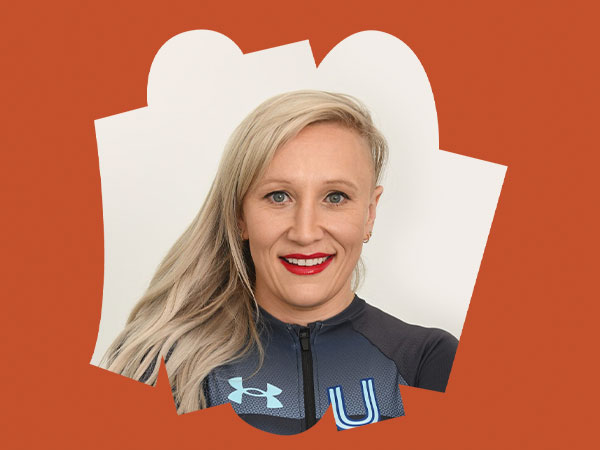



Financial year in review
The U.S. Center for SafeSport in 2022 sustained a robust financial position while maintaining its primary focus on working to end abuse in sport. In addition, the Center continues to explore diverse revenue sources while managing its expenses conservatively and prudently.
Approximately 84% of revenue comes from a $20 million annual payment by the USOPC, an amount established by law by Congress in 2020. This required payment remains fixed, but inflation—up nearly 20% since the law was written—reduces its spending power over time. As a result, the Center looks to increasingly provide services and value to non-Movement stakeholders to support its long-term financial sustainability.
A multiyear Department of Justice grant has been another regular source of support. The Center also receives fees from sponsorships and partnerships, areas that showed strong 2022 growth and are projected for continued expansion. Center revenues came in just shy of projections, with the modest shortfall due to the timing of booking grant revenues.
The Center spent less money in 2022 than expected for a few reasons. Savings were realized on fees related to some Center technology platforms. A tight job market left several staff roles vacant during the year, leading to lower costs related to salaries, travel, and some professional expenses.
Due to the 2022 surplus, the Center was able to increase its operating reserves, reflecting further progress toward its goal of establishing a reserve that would fund six months of Center operations. These reserves will allow the Center to weather changing conditions and to reliably sustain services crucial to athlete safety for those who count on them.
Revenue
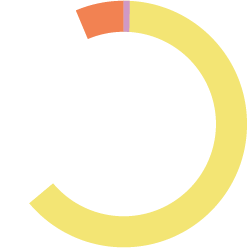
- USOPC Fees: 84.2%
- Grant Revenue: 10.1%
- Services and Partnerships: 4.7%
- Other Income: 1%
Expenses
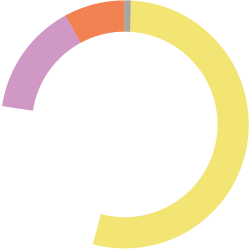
- Response & Resolution: 53.9%
- General and Administrative: 23.1%
- Education and Outreach: 14.6%
- Audit & Compliance: 7.9%
- Fundraising: .4%
Revenue

- USOPC Fees: 84.2%
- Grant Revenue: 10.1%
- Services and Partnerships: 4.7%
- Other Income: 1%
Expenses

- Response & Resolution: 53.9%
- General and Administrative: 23.1%
- Education and Outreach: 14.6%
- Audit & Compliance: 7.9%
- Fundraising: .4%
work and advocate for abuse prevention in your community.
- Get trained through courses and share resources available at SafeSportTrained.org.
- Advocate for abuse prevention policies like the MAAPP in your (or your child’s) sport or recreation organization.
- Be a positive bystander and take prompt, prudent action in settings where an athlete is at risk.
- If you’re in the U.S. Olympic and Paralympic Movement, be certain you are familiar with the safety policies that govern your sport activity, be sure you and colleagues are SafeSport® Trained, and engage your athletes in meaningful dialogue on safety in sport.
- Make a gift today!
work and advocate for abuse prevention in your community.
- Get trained through courses and share resources available at SafeSportTrained.org.
- Advocate for abuse prevention policies like the MAAPP in your (or your child’s) sport or recreation organization.
- Be a positive bystander and take prompt, prudent action in settings where an athlete is at risk.
- If you’re in the U.S. Olympic and Paralympic Movement, be certain you are familiar with the safety policies that govern your sport activity, be sure you and colleagues are SafeSport® Trained, and engage your athletes in meaningful dialogue on safety in sport.
- Make a gift today!
For a full list of terms and definitions, download our glossary.
Note: The data contained in this Annual Report is presumed to be accurate but may contain variances or inaccuracies due to changes in data collection systems and timing.
